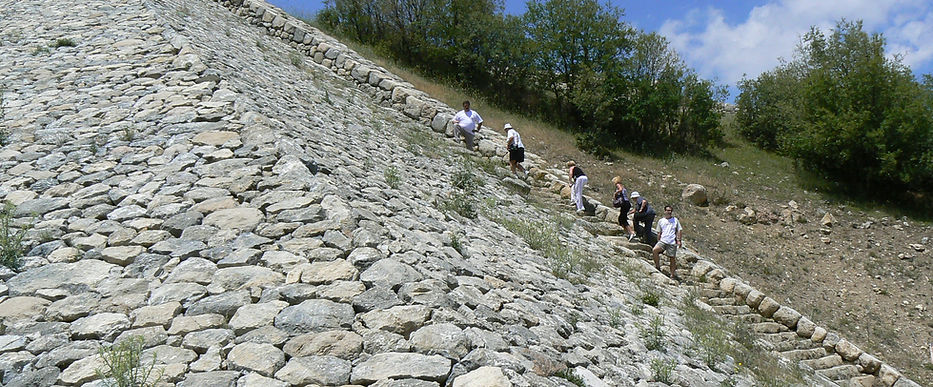

HATTUSA / THE HITTITE IMPERIAL CITY
Only a generation later, a Hittite-speaking king chose the site as his residence and capital. The Hittite language had been gaining speakers at the expense of Hattic for some time. The Hattic Hattush now became the Hittite Hattusa, and the king took the name of Hattusili, the "one from Hattusa". Hattusili marked the beginning of a non-Hattic-speaking "Hittite" state and of a royal line of Hittite Great Kings, 27 of whom are now known by name.
After the Kaskians arrived to the kingdom's north, they twice attacked the city to the point where the kings had to move the royal seat to another city. Under Tudhaliya I, the Hittites moved north to Sapinuwa, returning later. Under Muwatalli II, they moved south to Tarhuntassa but assigned Hattusili III as governor over Hattusa. Mursili III returned the seat to Hattusa, where the kings remained until the end of the Hittite kingdom in the 12th century BC.



Reliefs of Tudhalia 1, Hattusili 3, Muvatalli 2
TAt its peak, the city covered 1.8 km² and comprised an inner and outer portion, both surrounded by a massive and still visible course of walls erected during the reign of Suppiluliuma I (circa 1344–1322 BC ). The inner city covered an area of some 0.8 km² and was occupied by a citadel with large administrative buildings and temples. The royal residence, or acropolis, was built on a high ridge now known as Büyükkale (Great Fortress). The city displayed over 6 km of walls, with inner and outer skins around 3 m of thick and 2 m of space between them, adding 8 m of the total thickness.

Click on the pic. to zoom in
To the south lay an outer city of about 1 km2, with elaborate gateways decorated with reliefs showing warriors, lions, and sphinxes. Four temples were located here, each set around a porticoed courtyard, together with secular buildings and residential structures. Outside the walls are cemeteries, most of which contain cremation burials. Modern estimates put the population of the city between 40,000 and 50,000 at the peak; in the early period, the inner city housed a third of that number. The dwelling houses that were built with timber and mud bricks have vanished from the site, leaving only the stone-built walls of temples and palaces.
The city was destroyed, together with the Hittite state itself, around 1200 BC, as part of the Bronze Age collapse. Excavations suggest that Hattusa was gradually abandoned over a period of several decades as the Hittite empire disintegrated. The site was subsequently abandoned until 800 BC, when a modest Phrygian settlement appeared in the area.

Click on the pic. to zoom in
Reliefs and Hieroglyphs from Chamber 2 at Hattusa built and decorated by Suppiluliuma II, the last king of the Hittites.

Click on the pic. to zoom in
Model of Hattusa






